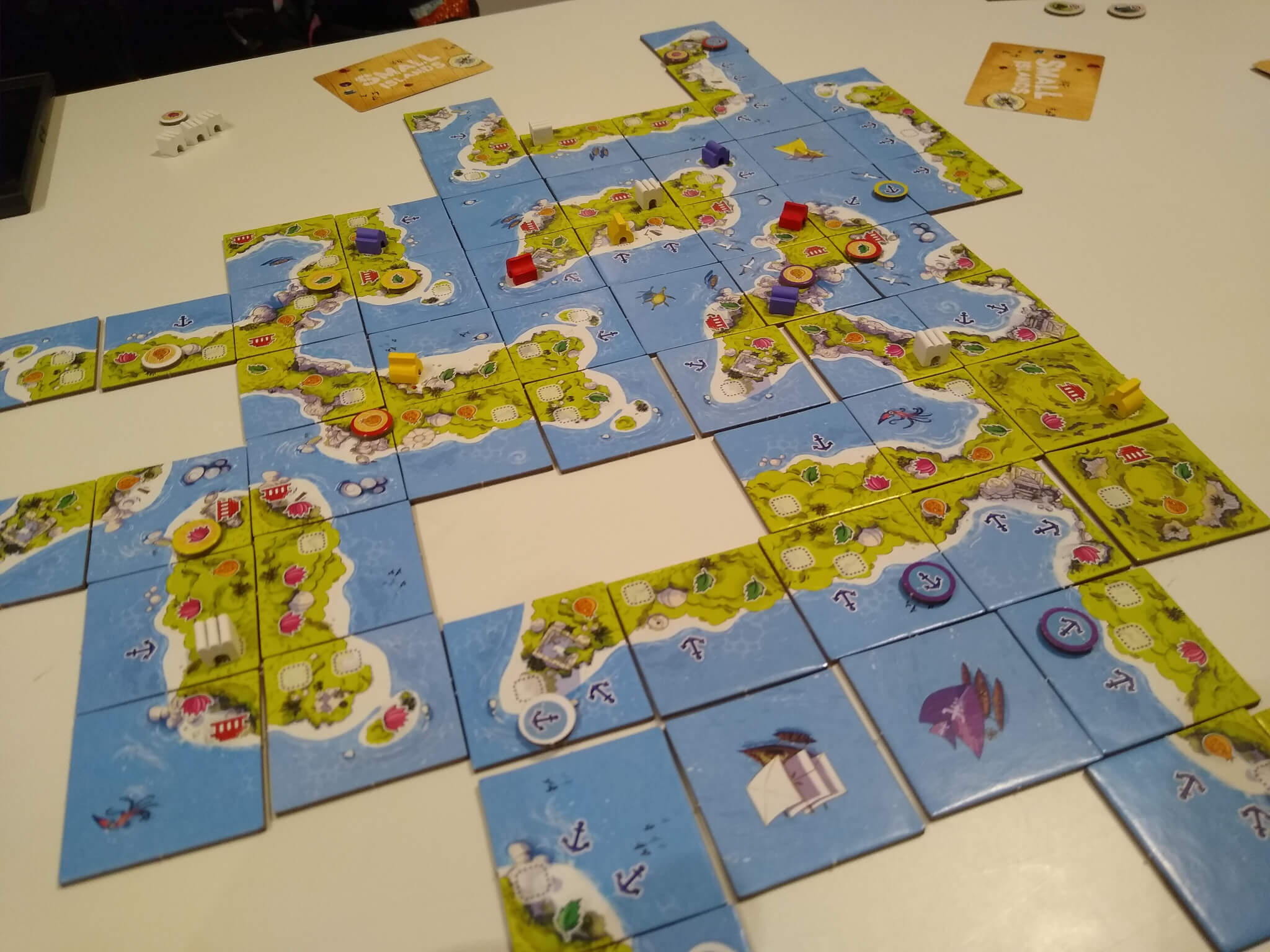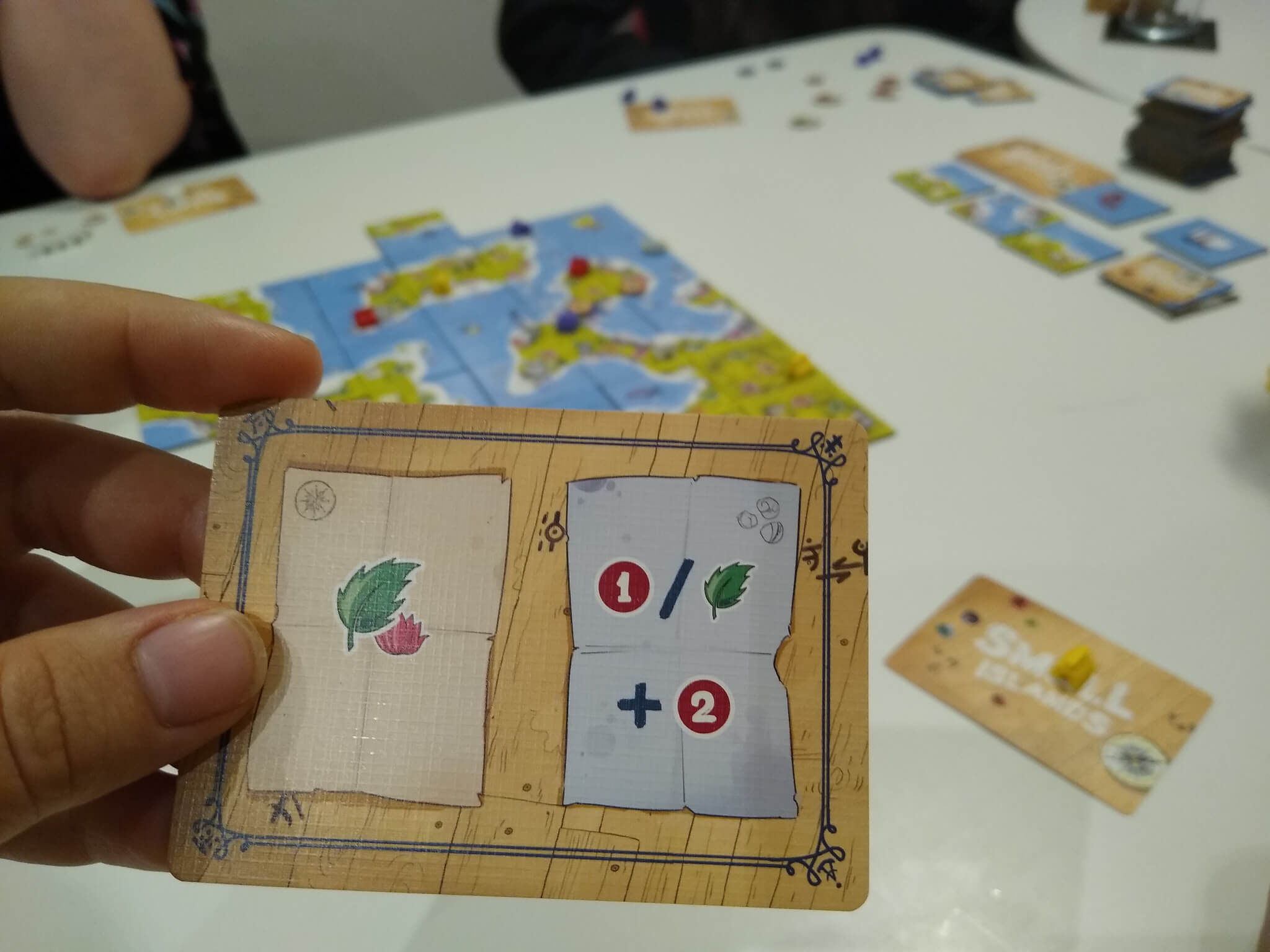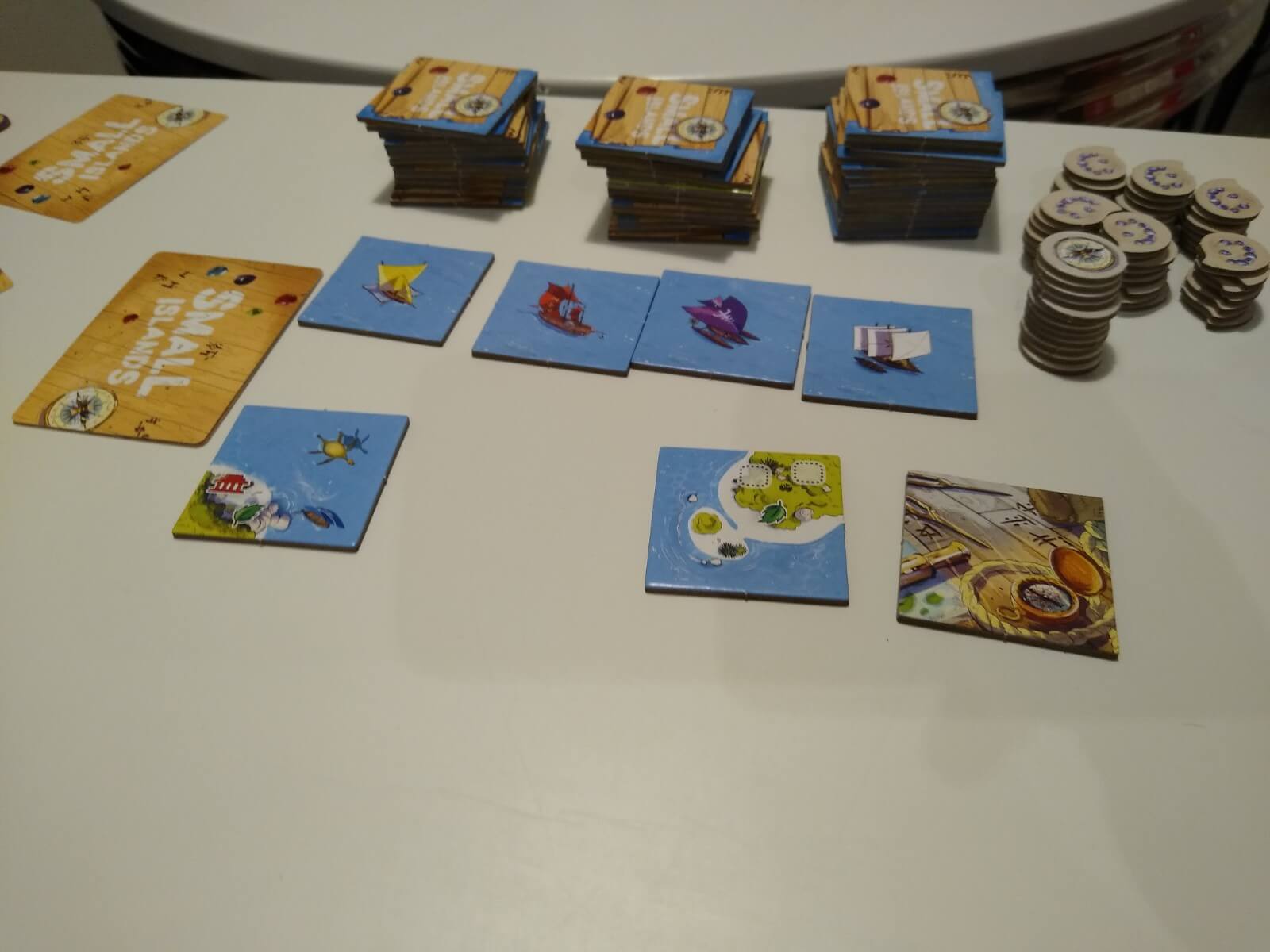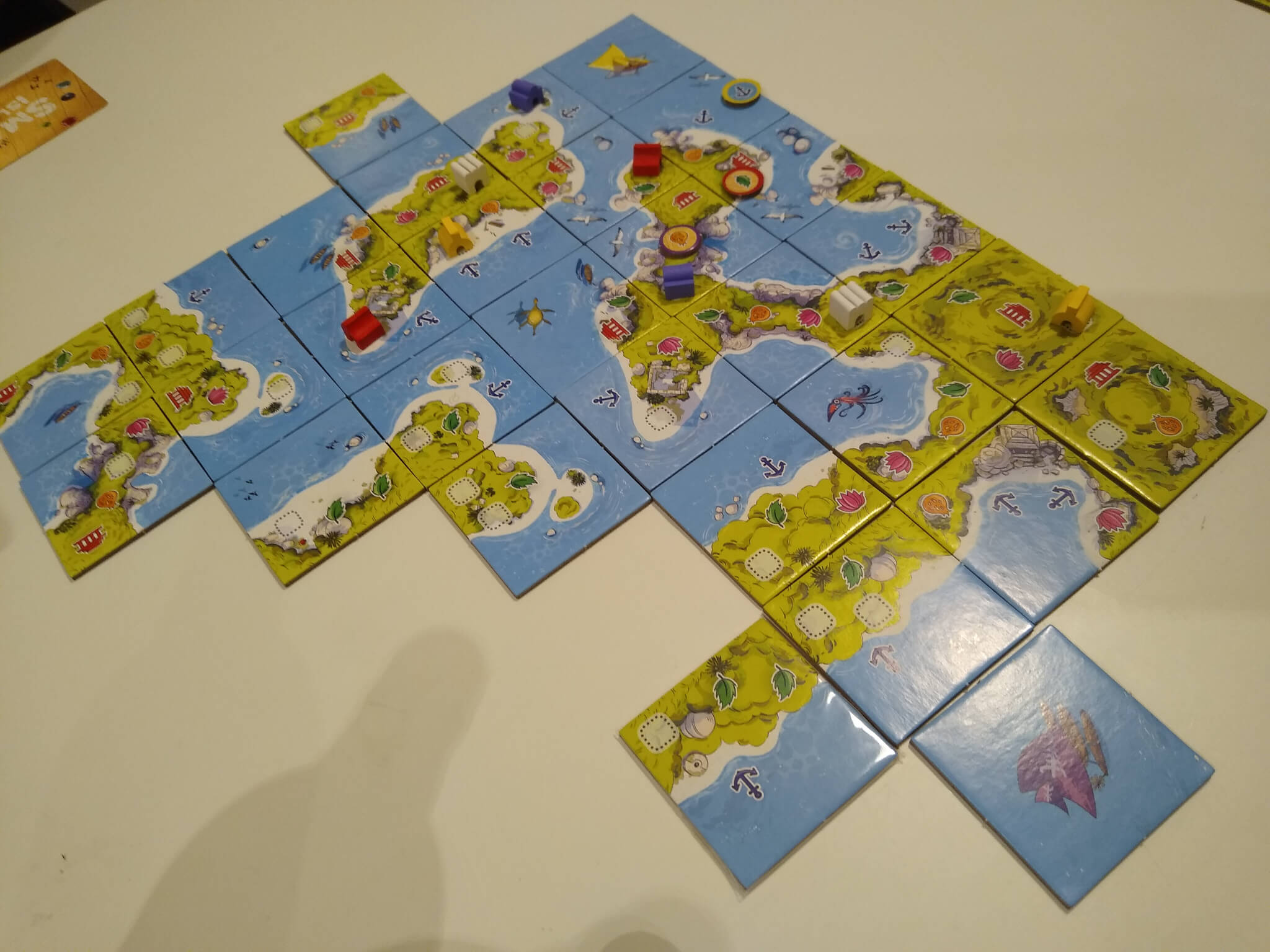Small Islands — tiny paradises made with tiles
Tile placement games are always interesting to play through, especially when people ignore the name of the game and instead just want to build a beautiful world. Small Islands is indeed a beautiful game, about creating small islands — not big islands — through tile placement.
At the start of each turn, players are given four colored houses and two cards. They must pick one card to keep and determine how they are going to score when creating the world within Small Islands. Players are also give two island tiles and four resource tokens. Tiles are the main gameplay element, paired with these different cards. When you are given two cards, you must take a look at them and pick the one you want to keep for the next round. At the start of the game you get two, one for the first round and one to be used in the second round.
Having to pick a score card based on the next round of the gameplay, not the one you are currently taking, forces players to think ahead and strategize. Once the players are ready to start, you’ll start placing tiles. With two in your hand, you can pick a third from an inventory of four at the top of the table. You can then place any of the tiles in your hand, connecting them to the four random tiles that were placed down to start with.
Tile placement does need to make sense — land masses need to connect to land, the border of the island needs to make sense. The tiles also have resources on them, showing what grass, fruit, temples, etc are listed on them. These have a lot to do with your score cards, as depending on what your score card says you’ll get points for islands with different resources on them. Some scorecards want you to find an island with more of one resource than the other, while others will give you points for each number of one or two resources. There are more complex scoring cards as well, requiring you to figure out some complex counting on each island.
Playing through the turn has each player consecutively placing titles to create the world. Players can choose to complete islands or, if they have touching ocean tiles, start making their own. But remember, the goal of the game is to create lots of smaller islands (each player has eight houses they can claim islands with, and they can only claim an island once) rather than giant ones. Once the six ‘navigation’ tiles are put into the public inventory, anyone can trigger the end of that round. This can be done by one player taking their boat tile, instead of an island tile, and placing it down on the map. Boat tiles cannot be moved and there is only one per player, and it can only be placed once.
After a boat is placed, players will work around the table placing one or more of their houses down. Each player can only have one house on each island, so creating bigger islands means that you can only score that area once. The houses placed on that specific phase are the only ones used to score the current card in your hand. Once houses are placed, you’ll start dishing out points tokens to keep track of the score. Then, two more score cards are given to each player (to pick from and use in two rounds time) before the game starts again.
Resource tokens can also be used on your turn, to place over current resources that are on the island, changing them to the top side of your token. Anchors can go anywhere in the water, as long as the tile doesn’t already have two anchors on it. Anchors are a pretty special resource in Small Islands, as those tiles, if around a boat, give that boat a bonus point for each anchor at the end of the game. This little bonus can make a huge difference when it comes to the final score.
Once all of the boats are placed, or all of the island tiles are exhausted, the end of the game is triggered and everyone must do one final scoring round before figuring out who has the most points. Small Islands is a complex game when it comes to tile placement and thinking ahead, however once you start playing, everything just snaps into place.
Our group first started by making sweeping, large islands out of the tiles. This proved to be the wrong tactic, as we were all building one island that, once our houses were on, we could not use again. Creating lots of small islands gives vastly more options and allows players to do more within the world.
Small Islands is beautifully made and wonderful to play. In trying to create islands which score high for them, players create beautiful looking archipelago. Perhaps my favourite thing about Small Islands though is that it doesn’t feel super competitive and is enjoyable throughout.
You can pick up a copy of Small Islands on Amazon.





Comments are closed.